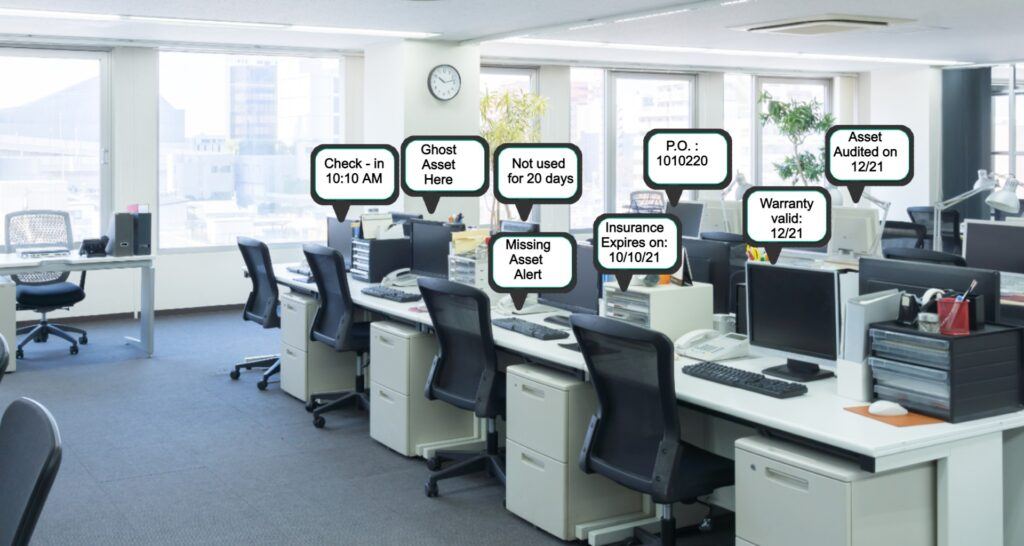Cosmetic Care: Smart Monitoring Solutions for L’Oréal’s Warehouse Excellence
L’Oréal’s Warehouse Temperature Monitoring Success. L’Oréal Brazil, a leading cosmetic company renowned for its innovation and commitment to delivering
Track asset performance, execute maintenance and service, and maximize uptime with advanced technologies.
Deliver as promised with risk-resilient, reliable, and sustainable logistics operations.
A revolutionary convergence of personal and process safety that improve efficiency, safety and reliability.
A fixed asset is an item used by an organization to create income. It always remains its installed position. Fixed assets may be more familiar to you under the name of capital assets They are also referred to as PP&E, or “property, plant, and equipment.”
Examples of fixed assets include air conditioning systems, buildings, natural resources, conveyor belt equipment, and land. These are not projected to undergo consumption or sale within the following year.
Some fixed assets are also intangible and can include intellectual property, as well as such growth-oriented investments as mutual funds and stocks. Physical assets, except perhaps for land, suffer from depreciation, but usually not as quickly as movable assets.
A movable asset, on the other hand, generally has a shorter life cycle. Examples include objects like office furniture, nails for construction, day spa equipment, and books. Both movable and fixed assets can be tagged and evaluated.
Within any organization, furniture inventory asset management represents a large investment and must be managed with efficiency. The typical corporate environment outfitted with office furnishings like chairs, desks, filing cabinets, credenzas and conference tables and equipped with a facilities management team. Factories, hotels, hospitals, medical offices, government offices, schools, and universities also spend countless dollars to furnish their premises.
Every year, these institutions lose thousands to millions of dollars per establishment simply because they are not accurately tracking and measuring their assets, such as supplies, computers, and high-value lab equipment.
Well-run organizations have a pool of equipment that can be used by multiple departments or divisions. Further, they want to leverage high-value capital equipment across organizations, even though they might reside in a specific area. Equipment managers, with their myriad of responsibilities, face challenges tracking the lending out of equipment.
Some organizations store their excess furniture inventory in spare offices or conference rooms, which isn’t a terribly efficient or professional way to utilize office space. While facilities managers might fear losing track of items placed in a storage facility or warehouse, a furniture inventory asset management system assigns a unique barcode to each piece of furniture. At any time of day, facilities managers have access to all of the information they need about the whereabouts and condition of these items.

In addition to financial concerns, a plethora of other issues arise when laboratories, and universities don’t maintain solid records of their assets. The following issues could easily be rectified with a robust asset tracking system in place at these institutions:
a) Without software to track and manage assets, schools, colleges, and universities are only left with the option of manually recording and handling inventory using spreadsheets or even regular text documents. Unfortunately, manual asset tracking results in a decrease in both productivity and efficiency across the entire establishment. For example, manually entering and tracking assets uses up lots of time, as does doing audits by hand instead of automating them with asset software. Such time could be saved and put to better use in advancing the laboratory institution’s goals and needs if employees were freed up from manual asset management.
b)As previously mentioned, not tracking assets with a flexible management system often results in items going missing, or being lost entirely. Even with a good emergency or backup fund in place, many educational institutions don’t have enough money to cover replacements for all their missing assets (especially when those numbers reach as high as $350,000 per laboratory).
c) Both decreased productivity and cost increases can combine to create the additional issue of operational setbacks. For example, any error in manual tracking can lead to confusion about who last touched or used a particular asset, which can then lead to the asset going missing entirely. Labs must then figure out how to make do without that asset until it’s replaced (if it ever is).
d) One of the biggest issues which arises for schools without reliable asset management technology is a lack of accountability. Without asset tracking software that can easily be updated and accessed across the entire institution’s leadership and staff, how are any of them to know who was last in charge of or touched each asset?
SmartX HUb Check-in/Check-out system for test and measurement equipment offers a simple, automated system to address these challenges. The system quickly and accurately accounts for checked out equipment by not only reading all the tagged equipment placed on the checkout counter, but also allowing for additional details to be provided at the time of checking out. Additional details could include project and experiment related information. Check-in process is similarly automated.
Organizations need to keep organized, real-time records of their furniture inventory for several reasons, including:
Explore our news to learn more about SmartX solutions
L’Oréal’s Warehouse Temperature Monitoring Success. L’Oréal Brazil, a leading cosmetic company renowned for its innovation and commitment to delivering
5 Tips for Maximizing Oil & Gas Asset Utilization With RFID Effective asset utilization holds immense significance in the
Manufacturing Automation Optimized With RFID RFID tags facilitate the seamless transmission of data alongside a product, enriching the information
Try SmartX HUB free for 15 days. No strings attached.
Organizations large and small and across industries can leverage RTLS to improve safety, safeguard materials and work more efficiently.
Discover how your peers are benefiting from real-time visibility.